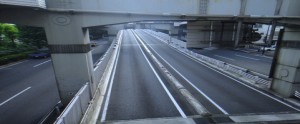 TOKYO METROPOLITAN UNIVERSITY
TOKYO METROPOLITAN UNIVERSITY
Research Issuescompany
In this research, we focused on the following five categories:
‘Concrete Engineering’ and ‘Steel & Composite Structural Engineering’ as the structural materials, ‘Underground Structure’ as the structural form, ‘Soil Mechanics’ which significantly influences on structures, and ‘Traffic Engineering & Infrastructure Planning’ plays an important role in the infrastructure systems.
We worked on the 5 tasks as follows to seek the measures for ensuring the long-term safety of urban infrastructures.

‘Concrete Engineering’ and ‘Steel & Composite Structural Engineering’ as the structural materials, ‘Underground Structure’ as the structural form, ‘Soil Mechanics’ which significantly influences on structures, and ‘Traffic Engineering & Infrastructure Planning’ plays an important role in the infrastructure systems.
We worked on the 5 tasks as follows to seek the measures for ensuring the long-term safety of urban infrastructures.

1 Defining the Deterioration Mechanisms and Establishing the Methods of Degradation Prediction and Durability Evaluation
Concrete Engineering Field
We examine the methods of degradation prediction and durability evaluation
with defining the cracking behavior which affects the durability of concrete
structures and the relationships between degrading factors and pore structures
of cement hydrate, and clarifying the impacts of the quality of constructions
and materials on the structures’ durability.
Steel and Hybrid Structural Engineering FieldConsidering fatigue crack and steel corrosion, we explore how to evaluate
the load-bearing capacity of the aging structures and try to establish
the residual life prediction, the degradation control method, and the permanent
repairing and reinforcing measures.
Underground Structure FieldUnderground structures in big cities have many destabilizing
factors like tunnels in close proximity or in the soft ground. We examine the evaluation
methods of the subsidence and deformation behaviors based on the
characteristics of the unstable ground such as soft foundation, liquefaction,
landslide and cutting.
2 The Examinations and the Diagnoses by Non-destructive Tests, Monitoring Inspections, and Maintenance Methodologies
Concrete Engineering Field
From the point of the view of the economic efficiency and the damages to
structures, it is important to figure out the structures’ performances
or the conditions by aging degradation without destroying, though, it seems
the truth about the reliability of data by the non-destructive tests is
poor at the current level of the measurement accuracy. However, it is expected
that the aging structure will be increased more and more in the future,
we try to improve its accuracy by evaluating the applicability of the non-destructive
diagnostic techniques that can be used with relative ease such as the ‘Acoustic
Emission’ method to concrete structures.
Steel and Hybrid Structural FieldMonitoring the progress of fatigue crack and corrosion degradation is useful
to ensuring the structural safety. We conduct our research on monitoring
techniques for steel and hybrid structures.
Underground Structure FieldIn order to ensure the safety of underground structures considering the ground characteristics, ground characterization technology by the non-destructive diagnosis is indispensable. We work on the evaluation techniques for the micro-tremor measurement results of the ground, the adaptability to the geophysical exploration technology for the subsurface geology and improving its accuracy.
3 The Repair and Strengthening Techniques for Ensuring Structural Safety
Concrete Engineering Field
Recovering the required performance of the aging
structures is crucial for ensuring the structural safety. We aim to establish
the strengthening technique for the existing concrete structures with the
results of the examinations for the load-bearing capacity of the repaired or strengthened
structures and the measures to prevent peeling by bonding the repaired surface.
Steel and Hybrid Structural Engineering FieldIt is known that fatigue cracks due to cyclic loading has been becoming
seriously in steel and hybrid structures. With the aim of ensuring the
structural safety by inhibiting cracks, we develop the fatigue life prediction
methods and the repair and strengthening techniques by using CPFR plates
for steel and composite structures.
4 The Ground Characteristics Affecting Underground Structures and the Stabilization Technologies of Unstable Ground
Underground Structure Field
The ground characteristic in the urban area is not always in good conditions
for construction. Underground structures are built in severe conditions,
such as some structures have been constructed close to each other, and
it is difficult to be repaired or strengthened compared to other subsurface
infrastructures. So, maintaining their original quality when building is
crucial for making underground infrastructures to last for ages. We pursue
the high-accuracy technologies for underground construction and the high-quality
techniques for building underground structures, like the way of driving
tunnels by controlling deformation due to excavation.
Soil Mechanics FieldIn order to inhibit the deterioration of underground structures due to
ground deformation, we should recognize the deformation around the structures
and improve or reinforce its characteristics appropriately. In our research,
we examine the evaluation methods for ground deformation because of soft
foundation, liquefaction, landslide or cutting and the stabilization technologies
of unstable ground.
5 The Estimation Methods of Traffic Conditions Applied to the Asset Management
Traffic Engineering and Infrastructure Planning Field
Due to changes in economic activity and society in future, utilization and priority of existing urban infrastructures are expected to be changed. From the standpoint of the asset management and securing the emergency road networks in the disaster circumstances as earthquake at the metropolitan area, we consider about the ideal form of the road transportation network in big cities and study the estimation methods of traffic conditions.